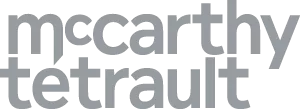- with Senior Company Executives, HR and Finance and Tax Executives
- in Canada
- with readers working within the Accounting & Consultancy, Healthcare and Law Firm industries
Check out ourCross-border Trade & Tariffs Roundup for the latest developments impacting Canada's global business relationships. Our team provides you with the insights you need to protect your interests and identify opportunities.
On April 2, 2025, United States President Donald Trump signed an executive order ("EO") applying "reciprocal tariffs" on nearly all trading U.S. trading partners. The EO invokes Trump's powers under the International Emergency Economic Powers Act of 1977 ("IEEPA") to establish a global tariff regime. This comprises a baseline 10% tariff coming into effect on April 5, as well as additional individualized "reciprocal" tariffs on imports from nearly all countries worldwide. These include new tariffs on imports from the European Union (20%), the U.K. (10%), China (34%), South Korea (25%), Japan (24%), and India (26%), among others. In the case of China, these reciprocal tariffs are stacked on existing blanket tariffs of 20%, for a total general tariff of 54% on Chinese goods.
For Canada (and Mexico), the EO did not immediately impose new tariffs. Instead, existing tariffs of 25% on most Canadian goods (except energy, critical minerals, and potash, which have a 10% tariff) — unless they qualify for preferential treatment under the U.S.-Mexico-Canada Agreement ("USMCA" or "CUSMA") —continue in force.
This update summarizes the EO's impact on Canada, the current state of U.S. tariffs and Canadian countermeasures (including recent Canadian actions in response to U.S. tariffs on vehicles and auto parts), and key considerations for claiming preferential treatment under CUSMA. Qualifying goods as originating under CUSMA is critical as it is one of the few ways to avoid the new U.S. global tariffs.
The EO and its Global and Canadian Impact
The EO is the most significant trade action undertaken by the Trump administration thus far, imposing large tariffs on most of the U.S.' major trading partners. The administration has published the tariff list and the basis on which the "reciprocal" tariffs were calculated. Taken together, these indicate that the tariff applied is the higher of: (1) the 10% minimum or (2) the country's trade imbalance with the U.S. exclusive of services divided by the value of U.S. imports exclusive of services, multiplied by 0.5 (presumably further to Trump's statement that "we're going to be very kind"). This has meant that many lower income countries that export to the U.S. but import very little have been hit with very high tariff levels.
Notably, countries that were subject to increased tariffs due to economic sanctions measures imposed by the U.S. (Cuba, North Korea, Russia and Belarus) were not included among the countries that were subject to reciprocal tariffs. This means that the tariff rates that apply to imported goods from Russia, which has a significant trade imbalance with the U.S., can be lower than rates applicable to goods from other countries having a large trade imbalance (such as Cambodia, exports from which will face a reciprocal tariff rate of 49%).
The EO does include exemptions for certain goods. As described in the accompanying White House Fact Sheet ("Fact Sheet"), these exemptions cover goods subject to existing and future measures under section 232 of the Trade Expansion Act, including the tariffs on steel, aluminum and vehicles. The EO also excludes goods currently under investigation for new tariff measures (such as lumber, copper and semiconductors), as well as bullion, energy and certain minerals that "are not available in the United States".
Further, these reciprocal tariffs only apply to the non-U.S. content of the imported good, provided at least 20 percent of the value of the good originates in the United States.
For Canada, the EO does not impose any new tariffs but maintains the existing "blanket" tariffs: 10% on imports of energy and energy resources, critical resources and potash from Canada, and 25% tariffs on effectively all other imports from Canada. As discussed in our prior client alert, The Tariff Merry-go-round: Concessions and Refutations | McCarthy Tétrault, these tariffs were modified in early March in part so that they do not apply to Canadian goods that claim and qualify for preferential treatment under CUSMA upon importation into the United States.
The EO does note that, in the event the existing Executive Order imposing blanket tariffs against Canada is terminated or suspended, CUSMA-compliant goods would continue to receive preferential treatment, while non-USMCA compliant goods would be subject to a 12% reciprocal tariff. In this way, the EO does propose a possible new tariff on Canadian goods if the existing "blanket" tariff falls away.
Like the other recent trade actions taken by President Trump, there is no defined end date for the tariffs identified in the EO. The Fact Sheet states that the "tariffs will remain in effect until such a time as President Trump determines that the threat posed by the trade deficit and underlying nonreciprocal treatment is satisfied, resolved, or mitigated".
Summary of Existing U.S. Measures Against Canadian Goods
Though the EO did not immediately implement any new tariffs on Canada, there are a number of existing measures in place that place extremely onerous duties on Canadian goods imported into the U.S. Given the signing of the EO and all of the developments in the weeks leading up to it, we have prepared a summary of the current measures in force on Canadian imports into the U.S. below.
Blanket Tariffs: Effective March 6, 2025, duties of 10% are applied to all Canadian-origin energy resources (including critical minerals) and potash and duties of 25% on all other Canadian-origin goods, unless they appropriately claim preferential treatment under CUSMA, See our client alert, The Tariff Merry-go-round: Concessions and Refutations | McCarthy Tétrault, for the latest on this measure.
Canada retaliated by implementing Phase 1 of its retaliatory tariffs, imposing a 25% tariff on approximately $30 billion worth of U.S. imports effective March [x]. See our client alert, Trade War Underway: Trump Tariffs Unpaused and Canada's Retaliatory Measures | McCarthy Tétrault. Phase 2 has been paused.
Steel and Aluminum Tariffs: President Trump signed executive orders ending exemptions to section 232 tariffs on steel and aluminum imports from Canada, reimposing a 25% tariff on all imports of steel and aluminum, and their downstream derivative products, effective March 12, regardless of whether they qualify as originating under CUSMA (although derivative products processed from steel or aluminum melted/smelted or poured/cast in the United States are excluded). These tariffs are in addition to any applicable blanket tariffs that may apply to the goods, such that some steel and aluminum products originating in Canada may be subject to a 50% duty.
In response, Canada adopted a "dollar-for-dollar" approach and on March 13 imposed a 25% retaliatory tariff on a list of steel products worth $12.6 billion and aluminum products worth $3 billion, as well as additional imported U.S. goods worth $14.2 billion, for a total of $29.8 billion in additional U.S. imports being targeted.
See our client alert for more details: U.S. Steel and Aluminum tariffs and new Canadian retaliatory measures now in force: what businesses need to know | McCarthy Tétrault.
Automotive Tariffs: Effective April 3, duties of 25% were applied to all imported passenger vehicles and light trucks, regardless of origin and with no exemption for vehicles afforded preferential treatment under CUSMA. An exclusion to the duty exists for the value of U.S. content in the vehicle. President Trump also applied a 25% duty to imports of the targeted automobile parts, but temporarily suspended this tariff in relation CUSMA -originating parts until a mechanism for calculating US value content similar to the automobile exclusion is established, which is required by no later than May 3, 2025. See our client alert for more details: Trump escalates trade war with 25% tariff on automobiles and certain parts | McCarthy Tétrault.
As described below, Canada announced its retaliation to this measure on April 3, 2025.
Canada Retaliates Against Automotive Tariffs
Though Canada has not announced a response to the EO, and is unlikely to in light of it not imposing any new measures on Canada, Canada has recently announced new retaliatory tariffs in response to the U.S. automotive tariffs.
Specifically, on April 3, 2025, Prime Minister Mark Carney announced that Canada would impose a 25% tariff on fully-assembled vehicles imported from the U.S. that are not compliant with CUSMA as well as a 25% duty on non-Canadian and non-Mexican content of CUSMA-compliant vehicles from the U.S. He clarified that this tariff would apply only to vehicles, and not on auto parts, given the level of North American integration in automotive manufacturing. He also indicated that the Canadian government is working with automotive manufacturers to develop a framework for exemptions to this tariff where it may be appropriate. Specific details on how these changes announced by Prime Minister Carney will be implemented have yet to be released.
Prime Minister Carney stated that the expected revenue from these tariffs, which they forecast to amount to $8 billion dollars, will be given directly to auto workers and companies affected by those tariffs. More details on this retaliatory measure are expected to be shared by the Department of Finance shortly.
As with the other announced retaliatory measures, it is expected that this measure will remain in place until the U.S. lifts all of its tariffs on Canadian products.
CUSMA Rules of Origin Are Now Critical
Given the frequent use of carve outs from tariffs for goods that appropriately claim preferential treatment under CUSMA, it is extremely important that companies exporting goods to the U.S. consider whether their products qualify for such preferential treatment, and safeguard against potential false declarations from their suppliers. This latter point is particularly important in light of the EO. Suppliers in countries subject to significant reciprocal tariffs under the EO may seek to take advantage of preferential treatment under CUSMA by utilizing Canada, increasing the risk of false claims and diversion.
As we discussed in detail in our prior client alert, The Tariff Merry-go-round: Concessions and Refutations | McCarthy Tétrault, determining whether a good can quality for preferential treatment under CUSMA can be a complex task, particularly for manufactured and processed goods. Different rules of origin can apply depending on the tariff classification of the good to be exported. Important considerations under these rules include:
- Whether there has been "substantial transformation" ― these are finished goods that are significantly transformed in the production process such that the final good is classified differently than its constituent goods;
- Indirect materials ― consideration of goods used in production, testing, or inspection, but not incorporated into the final product; and
- Production location and regional value content ― these criteria contemplate certain required percentages of the value of the goods being sourced and/or produced from and in a specific signatory country. Note that the assessment requires review of the place the goods are produced, not necessarily their place of export.
Importantly, certifying goods as originating when they do not can lead to significant liabilities, and agencies such as the Canada Border Services Agency and U.S. Customs and Border Protection verify origin claims through targeted and random auditing. To mitigate these risks, it is important that companies understand the certification process and document their rationale for why their goods qualify before making a claim for preferential treatment under CUSMA.
To view the original article click here
The content of this article is intended to provide a general guide to the subject matter. Specialist advice should be sought about your specific circumstances.








